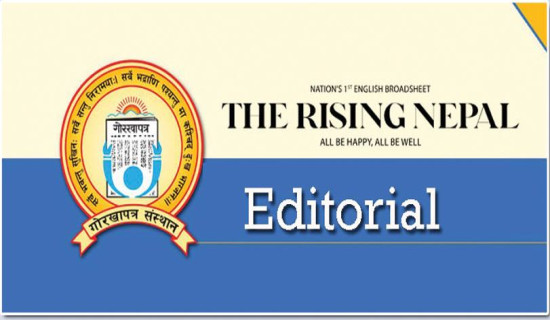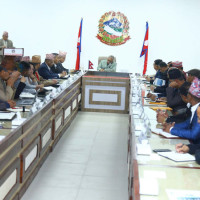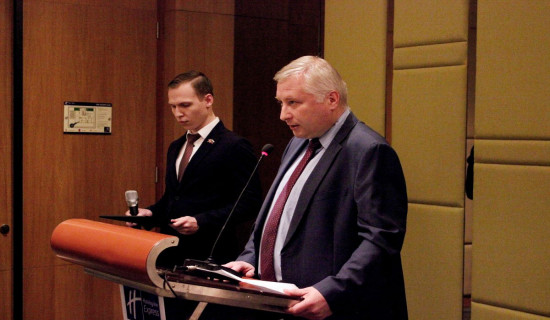- Tuesday, 23 December 2025
Step Up Disaster Response
Like the previous monsoon, Nepal is expected to receive above-normal rainfall this year. Such rainfall is bound to bring destruction to human lives and property on a large scale. Keeping this in mind, the government is gearing up with disaster preparedness efforts, yet issues like resource constraints and lack of preventative measures persist.
In its latest move, the Ministry of Home Affairs under the government of Nepal has decided to begin an early preparation to better respond to natural disasters. Last monsoon was horrendous all around the country. According to media reports, more than 244 people lost their lives to the September 2024 monsoon. Kathmandu Valley’s urban planning was heavily questioned after houses were fully inundated by the devastating flash flood. Furthermore, landslides, flooding and soil erosion were evident in other regions as well. With rising climate change, the intensity and frequency of monsoons have increased.
Amidst such a situation, planning and execution in disaster risk preparedness are fundamental. This year, the government plans to deploy more than 17,000 security guards for disaster mitigation, rescue and relief operations. The Armed Police Force (APF) has decided to establish 35 temporary monsoon response bases for the upcoming monsoon. Likewise, it has deployed 2,481 disaster management-trained personnel and 128 trained divers with specialised rescue equipment in all seven provinces.
Disaster management falls under the concurrent powers of all three levels of government. But resource constraints remain a core challenge, making rescue efforts from personnel ineffective. In the previous monsoon, rescue personnel were equipped with limited and not very effective equipment, like shovels, rubber boats, etc. This resulted in delayed and slow rescue operations.
The Ministry has issued the Monsoon Preparedness and Response National Action Plan 2082 B.S., based on which the local governments have been directed to take actions outlined by the document. It has also issued circulars asking local emergency operation centres and monsoon response command posts to be established at the municipality level. The local levels have also been asked to formulate their respective monsoon preparedness and response plans. The government is also stressing the need to run awareness programmes to make local communities aware of the monsoon-related disasters.
Relief and rescue remain crucial in the cycle of disaster management. But they are mainly reactive measures. They are not enough as they do not tackle the core issue, i.e., the absence of climate-resilient infrastructure. Our current infrastructure is unable to withstand the forces of nature. So, reconstructing the damaged infrastructures in the same modality is a futile attempt.
Subsequent monsoon-induced disasters have made it loud and clear that Nepal is required to invest in climate-resilient infrastructure. But lack of adequate resources – human, technological and most importantly, financial - makes Nepal’s disaster management incomplete. Hence, directives and circulars become mere documents without their enforcement. Along with that, negligence and ignorance on the part of citizens, when it comes to following building codes, have further fuelled disasters.
Given the growing climatic vulnerability and risk that Nepal is facing, Nepal’s approach to natural disasters requires complete transformation. The damages caused by natural disasters can be warded off to a large extent with concerted efforts of the government and the people. Hopefully, we will learn our lessons and be more proactive in this matter.

















